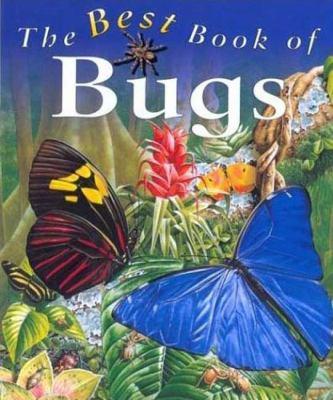
The best book of bugs
Describes the habits and life cycles of various insects and provides clues for identifying them in their natural habitats.
Available Copies by Location
| Location | |
|---|---|
| Victoria | Available |
Browse Related Items
- ISBN: 0753451182
- Physical Description 33 pages : color illustrations
- Edition 1st ed. --
- Publisher New York : Kingfisher, 1998.
Content descriptions
| General Note: | Includes index. |
| Immediate Source of Acquisition Note: | LSC 19.95 |
Additional Information

School Library Journal Review
My Best Book of Bugs
School Library Journal
(c) Copyright Library Journals LLC, a wholly owned subsidiary of Media Source, Inc. No redistribution permitted.
Gr 3-5ÃTwo lavishly illustrated introductions. Bugs highlights the major ways in which insects and spiders differ and then briefly describes some outstanding physical or behavioral characteristics of about two dozen arthropods. The life cycles of honeybees, dragonflies, and butterflies are also outlined. The second book briefly discusses the general characteristics of several groups of dinosaurs and mentions some special traits of about two dozen species. Brightly colored acrylic paintings of varying sizes appear on every page of both titles. Although the books are clearly written, the information is oversimplified and some important facts are omitted. For instance, in Bugs, the book notes, "Wasps live in colonies, too"; however, not all species are social insects, some are solitary wasps. In Dinosaurs, several chapters include fictionalized scenes. Descriptions of attacks by meat-eaters on plant-eaters are sensationalized. More thorough introductions to these subjects are widely available, such as Robert Snedden's What Is an Insect? (Sierra Club, 1993) and Jennifer Dewey's Spiders Near and Far (Dutton, 1993; o.p.); both include excellent illustrations. Miriam Schlien's Discovering Dinosaur Babies (S & S, 1991) and Steve Parker's Did Dinosaurs Lay Eggs? (Benchmark, 1997) offer lucid explanations of how recent discoveries have effected our understanding of what dinosaurs looked liked and how they behaved.ÃKarey Wehner, San Francisco Public Library (c) Copyright 2010. Library Journals LLC, a wholly owned subsidiary of Media Source, Inc. No redistribution permitted.

The Horn Book Review
My Best Book of Bugs
The Horn Book
(c) Copyright The Horn Book, Inc., a wholly owned subsidiary of Media Source, Inc. No redistribution permitted.
Rather than providing a comprehensive survey of the insect world, the book highlights a few interesting groups, including bees, beetles, ants, butterflies, and moths. Young naturalists will appreciate the basic information provided in the text, which is enhanced by detailed, close-up illustrations of the insects. Glos., ind. From HORN BOOK Fall 1998, (c) Copyright 2010. The Horn Book, Inc., a wholly owned subsidiary of Media Source, Inc. No redistribution permitted.

Kirkus Review
My Best Book of Bugs
Kirkus Reviews
Copyright (c) Kirkus Reviews, used with permission.
If readers could crawl through the grass on six legs or float overhead on gossamer wings, the views this radiantly illustrated book provides might well reflect their world. This introduction to insects covers the basic bugs children discover: beetles, butterflies, ants, bees, and dragonflies, as well as spiders and a few other non-arthropods, e.g., snails and worms. Some elementary facts are provided on each creature; played out in step-by-step pictures is a caterpillar's metamorphosis into a butterfly, as is a fierce dragonfly nymph's capture of a tadpole. The facts are common to most bug books, but the pictures are so eye-catching they fairly steal the show. Occasional captions point out individual features, such as the difference between the abdomens of a butterfly and a moth, or the various webs spun by spiders. The full-color cut-aways of ant colonies and bee hives, as well as the verdant overviews of the rainforest and deciduous forest floors, remove the ``creepiness'' of these crawly creatures and make them resemble living jewels. (diagrams, glossary, index) (Nonfiction. 6-9)


